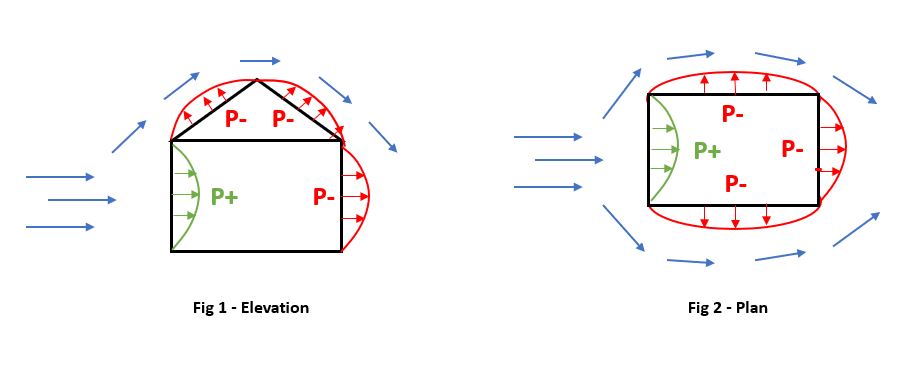If you are a Bob Seger fan, then you are familiar with one of his most popular songs, Against the Wind. The song is his personal reflection on living and working while trying to move ahead against the forces of life. With the lyrics “running against the wind,” he gives us imagery of something that we can all relate to. As ventilation specialists, the Eldridge team can also relate to the lyrics, but in a different way. When we design a ventilation system, even a powered system, we don’t want it running against the wind. It is more efficient for the industrial ventilation system to use the wind advantageously. It this article, you will learn why Against the Wind is a good for a song title, but bad for a ventilation system.
Science of Wind Power
To understand why we want to work with the wind when designing a ventilation system, we’ll start with the science behind how wind power works. When it is windy outside, if you open doors or windows on the opposite side of a building, air will flow through it. This movement of air is actually the result of positive and negative pressures on the building created by the wind..
The force or velocity of the air striking the side of the building facing the wind creates a positive pressure. As the air moves over and around the building it accelerates, which causes areas of negative pressure on the sides and top of the building. As the air flow separates from the top and sides, it also creates an area of negative pressure in the back of the building. Figures 1 and 2 illustrate the creation of these positive and negative pressure areas by wind.

To maximize creation of positive and negative pressure areas by wind, it is important to know the predominate wind direction. The NOAA website provides US maps of wind speed and direction. From these maps, you can determine the predominate wind direction for the hottest months of the year in your area.
System Design
We now know that wind will create positive and negative pressure around a building. The performance of a powered ventilation system will be enhanced by the location of fans. Supply fans should be in the positive pressure areas and the industrial exhaust fans in negative pressure areas. For the example below, we consulted the NOAA wind data. From it, we determine that the prevailing wind direction in the summer months is from the west. That means the supply fans should be on the west side and the exhaust fans on the east side of the building as shown in Figure 3.

Roof pitch and ridgeline orientation can be used to enhance a Powered Ventilation System. A steeper pitched roof will cause the wind to move faster and thus, create a greater negative pressure. Orientation of the ridgeline perpendicular to the wind direction will also increase the negative pressure on the roof surface. Incorporating both of these elements into the design of a building will enhance the function of roof exhaust fans.
Conclusion
When we are designing ventilation systems, we look for all opportunities to make the system operate efficiently. That is why our ventilation experts know how to maximize the advantages of wind direction to provide the best solution for your facility. If you need a new or redesigned ventilation system for your facility, the Eldridge ventilation experts have the skills and experience gained from 76 years in business to create a successful environment for your facility.
